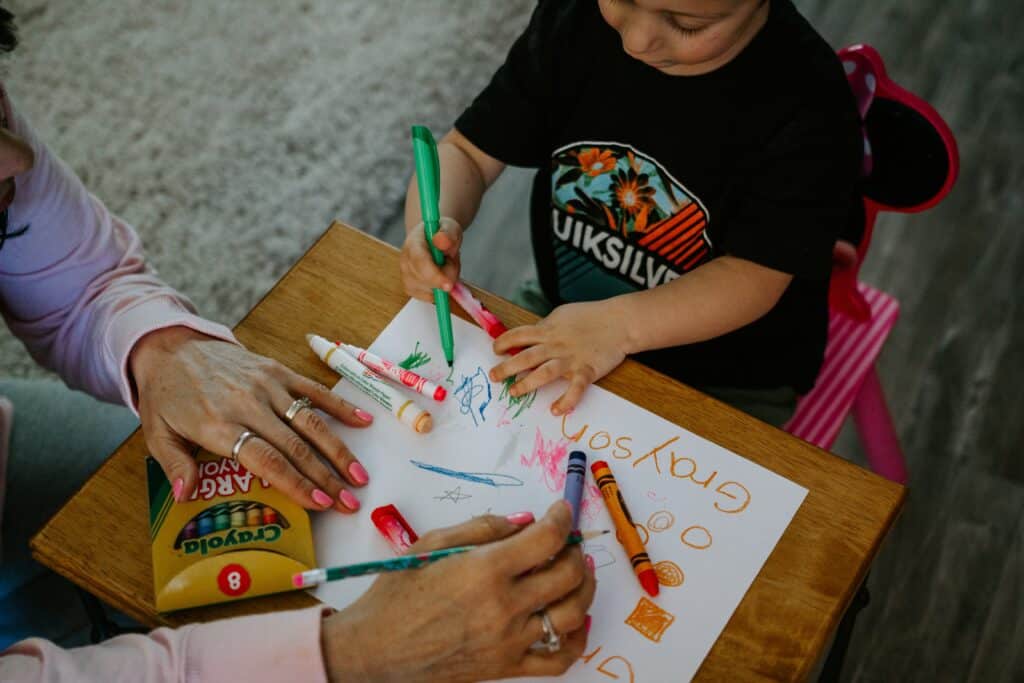The COVID-19 pandemic put a spotlight on the childcare crisis in our country. Some parents juggled work while caring for children at home. Essential workers struggled to find childcare that was open and affordable. But long before COVID, it was clear that childcare in the United States was in crisis.
Half of all families in the United States reported difficulty finding childcare – an alarming figure that is even higher among low- and moderate-income families and families of color. When there is childcare available, the cost can be prohibitive. At $11,000 on average, childcare is more expensive than public college in most states.
Lack of childcare impacts many other aspects of life. When families cannot find care, parents (especially mothers) are more likely to drop out of the workforce, costing the family income. Working families lose more than $8 billion in wages from lack of childcare access. High-quality childcare is not only critical to a child’s development; it also delivers a proven return on investment for society at large. Every $1 invested can generate $7.30 in economic activity.
Communities cannot thrive without access to childcare – which is why it should factor into Community Reinvestment Act (CRA) modernization.
TAKE ACTION: Submit comments to regulators on new rules that will shape our work for decades.
To date, some Community Development Financial Institutions (CDFIs) play an important role in providing financing for childcare programs. Banks should increase their investments – both directly to child care programs and in partnership with trusted intermediaries like CDFIs. If the definition of essential community facilities expanded to explicitly include child care, banks may feel more confident they will receive CRA credit for investing in child care programs. This could expand the resources for child care programs and help to expand the supply of affordable childcare.
The federal bank agencies have proposed several changes to the CRA regulations including updates to the definition of community development, which is intended to increase financing for community revitalization. If the proposed definition of essential community facilities expanded to explicitly include childcare, banks may feel more confident to directly invest in childcare programs, and can be sure they will receive CRA credit. This could boost resources for childcare centers and help to expand the supply of affordable childcare.
Bank financing could be instrumental for child care programs. There is currently no dedicated source of federal funding for the acquisition, construction and renovation of childcare facilities. States and territories can use federal Child Care and Development Block Grant (CCDBG) funds for minor renovations, but the funds cannot be used for major renovations or the purchase or improvement of land. Banks can fill these gaps by providing loans for construction and renovation. Grants could be offered to help with operational costs. The agencies should consider grants and loans to childcare facilities within the community development finance test to encourage such activity.
Many childcare centers are small operations. Some may not have business deposit accounts. Others may not even have bank accounts. These smaller operators are not ready for traditional loans. Much-needed financial education for childcare providers can and should be encouraged through the proposed Community Development Services Test.
Many childcare center workers and owners tend to be women of color and immigrant women. The providers rarely get insurance or other benefits through work despite making less than $28,000 a year on average — “less than bellhops, taxi drivers and pet sitters,” the Washington Post noted. By increasing investment into these facilities, banks can support these women-owned businesses, and entire families and communities.
As the agencies consider CRA modernization, we encourage them to consider how the rulemaking can support childcare centers. Bank investment in childcare can help to not only address the current childcare crisis – but to boost long-term economic growth in the LMI communities the agencies aim to aid.
Amy Lieber is a Healthy Equity Intern at NCRC.
Photo by Gabe Pierce on Unsplash



